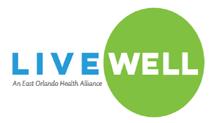LIVE (Cont.)
What Could 2021 Mean for the Housing Market? This year has been nonstop uncertainty. The coronavirus pandemic led to shutdowns and major changes to our everyday lives. Those changes are likely to continue as we head into winter. Cities have been hard-hit, not only in terms of public health, but also economically. Despite everything, the housing market is one thing that’s been consistently strong this year. So, what do experts think next year will bring? Will that positivity hold steady, or are we in for a bust? Rising Prices If inventory remains low into early 2021, it’s possible that home prices will continue to go up. The median asking price for properties in September 2020, according to Realtor.com, was $350,000. That’s up 11% compared to last year. Inventory has declined 39%
While there are some indicators of positivity, there are also potential negatives that could come into play. Unemployment numbers are still high, and rolling lockdowns throughout the winter could cause those numbers to rise. Some predict that foreclosures could also rise as a result.
year-over-year, despite a quick burst of new listings in August. Increased demand and a dwindling supply are great for sellers but not so much for buyers. Suburbs Reign Supreme There has been a shift in interest away from urban areas, as many people are packing up to find homes with more space and less proximity to others. Some of the most popular areas in 2020 have included Colorado Springs, CO; Reynolds-
When facing uncertainty and anxiety, there’s a tendency among consumers and would-be homebuyers burg, OH; and Rochester, to hoard their cash. Personal NY. We could see continued savings rates have actually flight from urban areas to gone up recently, but that suburbs in 2021. means there may be less spending going on, particBuilder Confidence ularly on bigger items like Despite all of the headwinds houses. and what feels like a barrage of negative informaFinally, while there are tion, there is some optimism some unnerving indicators, in housing starts. Consumer we do know with almost confidence was high in Sepcertainty that record-low tember, and builder sentimortgage rates will hold. ment similarly seems to be The fed has signaled their at an all-time high. intention to keep rates low for the foreseeable future. Could There Be Downsides?
Why Lenders Use Gross Monthly Income vs. Take-Home Pay It might seem strange that mortgage companies use gross monthly income when determining affordability instead of ‘takehome’ pay. After all, it’s the take-home pay that consumers use for their monthly expenses and bills - including the mortgage. But there are a few good reasons why lenders use the gross amount.
There are a few loans that do take monthly expenses and ‘residual’ income into consideration, but most every other program uses gross monthly income.
no shortage of online preThird, employers report in- qualification calculators to come each year to the IRS, help you get started. Just and the amount reported remember to enter your is gross income, not net. gross monthly income, not When consumers are asked your net or take-home pay, to document income on so you don’t short-change their loan application, the Second, it’s a figure that yourself. most consumers readilast two years of W2 forms ly know. Calculating net are needed along with Visit www.TopOrlandoincome with taxes, deduc- recent paystubs. The gross Homes.com for more inforamounts on the paystubs tions, etc. is complicated mation. should align with the W2 and can vary month-tomonth. Gross income is forms. Trying to parse net stable and easier to quickly income from these docuFirst, it’s universal. Lendcalculate monthly. It would ments is impossible. ers A, B, and C all use gross monthly income to be impossible for lenders If you’re thinking about calculate debt-to-income to adjust their loan proratio (and thus affordabili- grams for each individual’s buying your first home and want to know what you ty), so everyone is qualified specific expenses and deusing the same guidelines. ductions. might qualify for, there’s
















